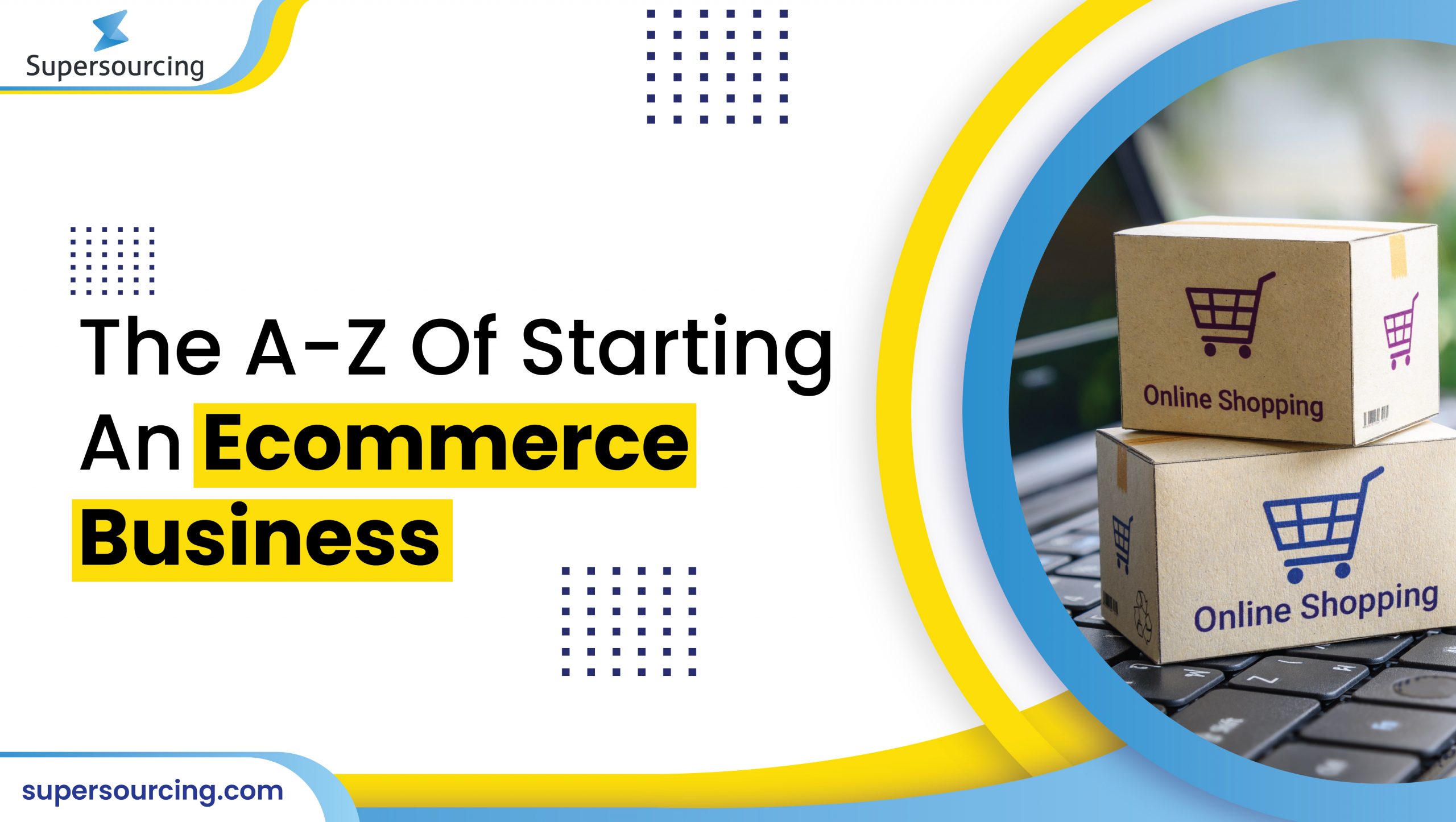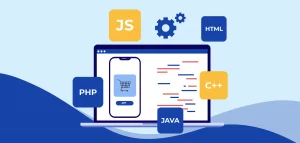Table of content
With a vast number of e-commerce businesses already clogging the domain, starting an ecommerce business from scratch can be a humongous task. However, with user access to the internet increasing worldwide, the customer base for small e-commerce players is increasing correspondingly. If you have an idea that you believe can lead to a profitable and scalable e-commerce business, here are the steps you need to follow to start an e-commerce business.
Following Steps to Start an E-Commerce Business
1. Pick A Domain
The first step in starting an e-commerce business is picking the domain in which the business will operate. This is primarily the kind of goods the business will sell. It is well-known that Amazon started with books, and then expanded into the behemoth it is today.
Similarly, it is important to start at a small scale, and not spread yourself out too thin too fast. Choose a limited niche and then attempt to expand. The following are the types of domains you can operate in –
- Tangible goods or goods that can be shipped;
- Digital goods, such as eBooks;
- The services business, selling services such as VoD subscriptions or even insurance policies.
Whichever niche you choose, you must always make sure that you have some kind of expertise in the niche as a broad entity, or at least that you can hire experts to guide you through the intricacies of the domain.
2. Choose Your Products
You must conduct a thorough analysis of the products in the niche. Try and understand the primary companies that sell these products, and the margins that these products operate on. The following guidelines will help you choose your product cohort.
- Ask yourself some questions. Are these products profitable for the other companies that sell them? How much discount can you prospectively offer on them? How much profit can you earn post-discount, if any?
- Paint the picture of your ideal customer during the early stages of setting up your e-commerce business.
- Grasp the reason why customers buy the products you are planning to sell.
- If possible, try collecting data regarding the market size and segmentation, major manufacturers, the user base of each product, and the general trend of the market over the years.
The above data will enable you to move forward with setting up your business not just more proficiently but also based on verified data. This data will also allow you to take integral decisions regarding your business down the line.
3. Incorporating Your Business
During the course of conducting research on conducting your business, you are sure to have encountered advice against incorporating your business during its initial days, or if your business is too small. However, it would be prudent to never follow such advice. Always incorporate your business.
Incorporating your business isn’t just about informing the tax department of your country about the existence of your new business. Much more than that, these are the advantages of incorporating your business.
- Certain companies will not deal with your business unless you have been properly incorporated and registered.
- If you are looking to deal with financial institutions regarding payment methods and compatibility, you might suffer significantly simply by virtue of not being incorporated.
- Being an incorporated business makes you an official entity. As you proceed with your e-commerce business journey, you will realize this makes a world of difference.
4. Naming Your E-Commerce Business
Naming your e-commerce business is perhaps one of the most fun parts of starting the business. However, it is also one of the trickiest parts of the process. Experts will always recommend the name you choose for your business that gives your prospective customers a vague idea of what your business is all about.
Choosing abstract names – such as the name of your favorite fruit, or rainforest – might be an exciting proposition, but might also do more harm than it does good. You can always come up with a name of your own, but do keep in mind that the company caters to your customers, and not to you.
Here are the steps for naming your new e-commerce business.
- A good start when you want to name your company is to lookup options in an online business name generator. With these tools, you will need to enter a few keywords related to your business – these could be the mode of sale, the broad domain, and any other USPs you think are relevant – and ask the generator to suggest names.
- It is necessary to put yourself in the shoes of the customer, and determine whether you would buy from a company with the given name. If the name is clever but too difficult, drop it.
- Do make sure a .com domain name is available for the company name that you end up choosing. Do not opt for any other domain.
5. Platform & Hosting
As an e-commerce business, you need a server to host your website on a platform that facilitates transactions. Here, it is best to save yourself from the hard work of building a platform from scratch. For this, it is crucial that you find a software development company that understands your requirements and constraints.
Another option is to choose an e-commerce business platform. If you are looking for a multipurpose platform that acts as a conduit for your transactions, you can opt for WooCommerce or Shopify. These are both based on WordPress and also take care of your website hosting needs. Platforms such as Gumroad will help, if you are looking to be a digital services or subscriptions vendor.
If you do not want your e-commerce platform to set up hosting for you, there are several hosting options that you can choose among, depending on what you believe your initial site traffic will be.
6. Design Your E-Commerce Business Store
Just as with a brick-and-mortar store, the design of an online store is also a part of the user experience. Depending on which e-commerce platform you choose, will be offering access to a decent volume of readymade themes that you can use out-of-the-box. However, this would not be a recommended approach, considering that thousands of other e-commerce businesses have access to the same themes. If you want to stand out, it is always prudent to put some work into becoming unique in the following ways –
- Check the other websites of your niche and develop a sense of how they sell goods.
- Try and understand what the focus is on – the product or the people using the product?
- Is the price highlighted, and are discounts accentuated in bold on the homepage itself?
- These elements will give you an idea about how you can sell your products.
7. Add Products
The way you add products is probably what most decides their fate on your website. There are scores and scores of factors you need to consider and manage for each product that you add.
- The first and most important part is the title of the product. The title must necessarily be search engine friendly. It must rank high in Google Search results, and not be so complex that people can’t look it up.
- This is also where the importance of the meta title, meta description, and general makeup of each of your webpages comes in.
- The product description must be vivid and also contain the right keywords to help the ranking of your product on search engines.
- The images of the product you put on your website are another important consideration. Depending on the product niche that you operate in, the features of your product that your customer might like to see would be different.
- To the greatest extent possible, make sure that these features are highlighted through high-quality photographs. Attempt to standardize the images of products on your website by taking the images yourself instead of opting for vendor-provided images.
8. Logistics Required for E-Commerce Business
Once you have set up your store, it is important to get the logistics figured out. Logistics is an extremely complex part of the business, and you must spend time chalking out the following details –
- The locations that you will be shipping to.
- The charges you would levy on shipping to various locations.
- The detailed supply chain of each of your products. You can make a choice between storing products in your warehouse or allowing the vendors to retain them in theirs, monitoring their inventory, and having them ship the goods to the desired locations. Both approaches have their pros and cons and depend on the niche you are operating and the vendors you are dealing with.
- Your agreements with these vendors must reflect minute details of the logistics arrangements, including inventory management, transportation, shipping, and ordering.
- If you are storing goods in your own warehouse, you will also need to hire a third-party transportation company for the different levels of shipping that you intend to provide.
9. Launching Your Product
How you officially launch your e-commerce business can be an integral determinant of the future of your business. There are two major ways you can launch your business –
- You can opt for a soft launch. In this type of launch, the owner makes the website active before informing the general public. Site owners might also induct an initial cohort of known people to vet their website while it is active and inform them of any deficiencies.
- This way, the general public only gets to access the improved version of your website after an initial review. A soft launch is the more prevalent type of launch for small businesses.
- A hard launch is when you inform the general public about your website before it launches. The marketing team can carry out various promotional activities (covered in the next section) teasing your website. The website is only launched after you get ample interest from the general public. You might need to prepare your servers for a sudden increase in traffic when the website opens.
10. Promotion & Marketing of E-Commerce Business
Once you have your business set up to your standards of satisfaction, you need to determine how to promote your company. What type of image will your brand have? What will be the core message of your brand? These questions need to be answered before you make the first promotional post.
When your brand image has been determined, you can start with promotional activities. You can offer early-bird discounts on your portal and publicize these discounts through social media. If you can infuse some cash into this process, you might also want to hire a marketing firm that will take care of ensuring that the reach of your posts is appropriate.
You can also indulge in offline marketing through physical events but this type of marketing has a smaller reach. Opt for contests and giveaways which involve people signing up for your portal as a precondition to becoming eligible.
There are various other modes of marketing that you can explore. However, in choosing a marketing method or platform, always ensure that it is in keeping with the brand image you have determined.
Conclusion
Starting an e-commerce business from scratch can take months and years before the first product goes on sale. However, there is enough motivation to note that 95% of all transactions are projected to be online by 2040. The above steps provide you with a brief overview of the kind of work setting up such a business involves. If you can put in the kind of commitment it requires to build the next Amazon, follow your idea, and never look back!
Supersourcing, like to make you aware; if you are having such a business idea then, don’t delay any more. Just post your business idea on Supersourcing platform and soon you are going or flooded with options of expert development agencies in that domain.







